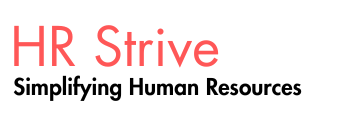To understand people from around the world, we need to first know what “culture” means. It’s not just about accepting differences—it’s about valuing them and not thinking one way of life is better than others.
Culture is a group’s shared way of thinking, believing, and behaving. It shapes how people see the world and how they act in everyday life. Culture is often invisible, passed down over time through families, schools, or society.
Different cultural models help explain how groups behave. These groups can be countries, companies, teams, or even small communities. You can think of culture like an invisible set of rules we follow—most of the time without even noticing.
When Can We See Culture?
Culture shows up clearly when people work or live together. For example, at work, school, or home, people speak, act, and make decisions in ways shaped by their background.
But culture isn’t the only thing that makes us who we are. As researcher Geert Hofstede explained, two other things also shape us:
-
Personality – our personal traits and life experiences.
-
Human nature – the basic feelings all humans share, like joy or sadness.
Hofstede compared culture to “software of the mind”—like apps running in the background, guiding how we think and act. We all run many “programs” at once, and sometimes, they clash or cause confusion.
What Happens When Cultures Don’t Match?
In a workplace with many different cultures, people might misunderstand each other. Take the hijab, for example. In some countries, it may be seen as a sign of control or inequality. But for the woman wearing it, it might be a symbol of her faith or pride.
If coworkers or managers judge her through their own cultural lens, it can cause tension. Worse, it may lead to unfair treatment. This can harm the organization’s reputation and may even break the law.
The best way to handle these situations is through curiosity and respect. When leaders and HR teams take time to understand cultural differences, they create a more welcoming and successful workplace.
Layers of Culture
Culture has many layers. Some parts are easy to see—like food, clothes, or language. But deeper parts—like beliefs or ways of thinking—take time to understand.
Two images help explain this:
-
An iceberg: Only the top (what we see) is visible, but most of it is hidden below.
-
An onion: We need to peel away outer layers to get to the core.
Edgar Schein, an expert in workplace culture, said culture has three levels:
-
Artifacts and Products – Things we can see or hear: the way people dress, design their offices, or the music they listen to.
-
Norms and Values – What a group agrees is good or bad, right or wrong. This can be reflected in laws, company policies, or social rules.
-
Basic Assumptions – The deep, often hidden beliefs about life, success, and what matters most. People usually aren’t even aware they hold these.
To truly understand culture, we have to look beyond what’s on the surface and dig deeper into values and beliefs.
Culture vs. Climate
Sometimes people confuse culture with climate. They are different.
-
Culture is the long-term shared beliefs of a group.
-
Climate is the short-term feeling or mood in a place—like if the team is stressed or excited.
For example, a company might have a strong culture of teamwork. But if a few leaders act unfairly or the company is going through a hard time, the workplace might still feel tense. That’s a climate issue—not a culture problem.
Good HR teams can tell the difference and help fix short-term problems without changing the company’s core values.
What Is Cultural Intelligence (CQ)?
Cultural intelligence means being able to notice, understand, and adjust to different cultures. And it’s not just about nationality—it also includes differences in age, gender, religion, race, economic background, or beliefs.
Expert Nancy Adler says there are three parts to cultural intelligence:
-
Cognitive – Learning about other cultures and knowing how to use that knowledge.
-
Motivational – Being curious and open to learning from others, instead of feeling uncomfortable or defensive.
-
Behavioral – Changing how we speak or act based on who we’re with and what the situation needs.
Many training programs only focus on the learning part. But real success comes when we also feel motivated and act respectfully.
Final Thought
Culture is all around us, even when we can’t see it. The more we understand and appreciate different cultures, the better we can work together. With cultural intelligence and a willingness to learn, HR leaders and teams can build workplaces where everyone feels respected, included, and able to thrive.

No comments:
Post a Comment